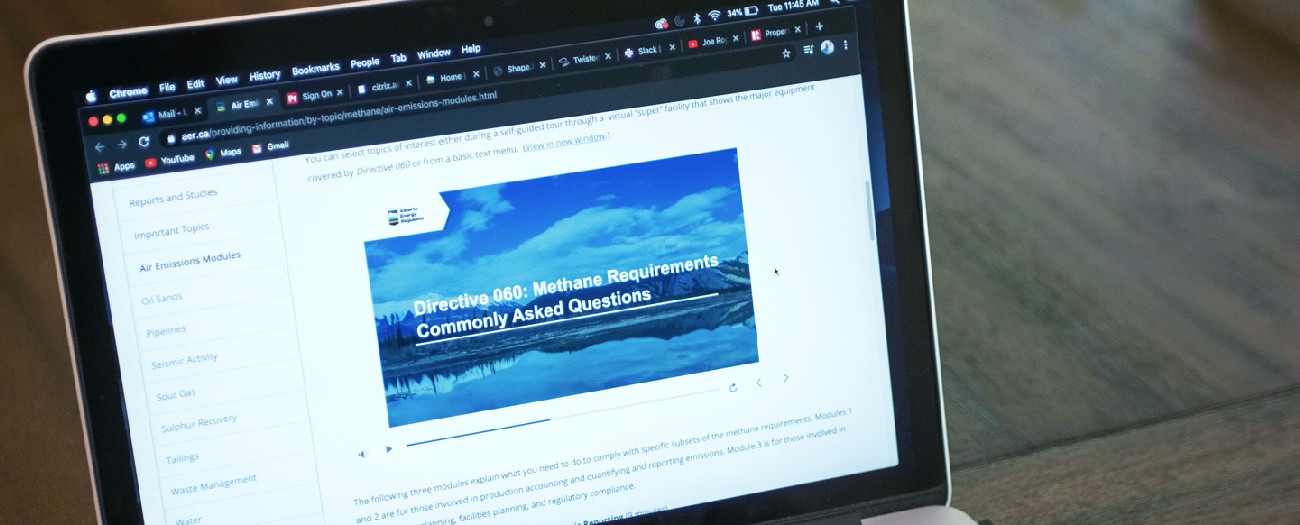How the AER is working with industry to navigate new methane emissions requirements
Alberta - September 08, 2020
Ask any yogi for tips on finding Zen, and they will likely tell you to start by taking a deep breath.
While filling our lungs with air is one of the most basic functions of the body, so basic that we do it without even thinking about it, understanding exactly what we're breathing in is far from basic and of great interest to many across the province, including Alberta's oil and gas industry. In fact, in the last year, AER technical experts have responded to over 200 inquiries from industry regarding methane emissions work.
To help with this complex task, the Alberta Energy Regulator (AER) has developed a series of online resources to help companies better understand and answer common questions about the new methane requirements that came into effect earlier this year.
In 2015, the Government of Alberta tasked the AER with developing requirements to reduce methane emissions from upstream oil and gas operations by 45 per cent (from 2014 levels) by 2025. These requirements were released in 2018. Five years later, the government directed the AER to amend and update those regulations, and these requirements came into effect January 1, 2020.
"We heard from various companies that they were finding the new regulations hard to digest," explains Lindsay Campbell, an emissions advisor with the AER. "With all the changes, we thought that providing extra resources would be helpful."
Moving it Online
Like nearly every event or service in 2020, the methane emissions resources are available online to give company experts real-time access to important information to help them navigate the requirements. The five interactive videos address the most frequently asked questions by companies and cover topics such as how methane requirements affect existing approvals for companies and what companies need to do to comply with specific subsets of the methane requirements.
"The e-learning tools are a useful way to provide clarity to questions we (and others) may have," says Sean Hiebert, an emissions management engineer with Cenovus. "Some of the additional clarity that I appreciated the most pertained to gas pneumatic equipment inventory/limit scope."
"We are entering into a complex new world with regards to understanding methane emissions and how to measure and report them," says Campbell.
Kate Bowering, Writer


